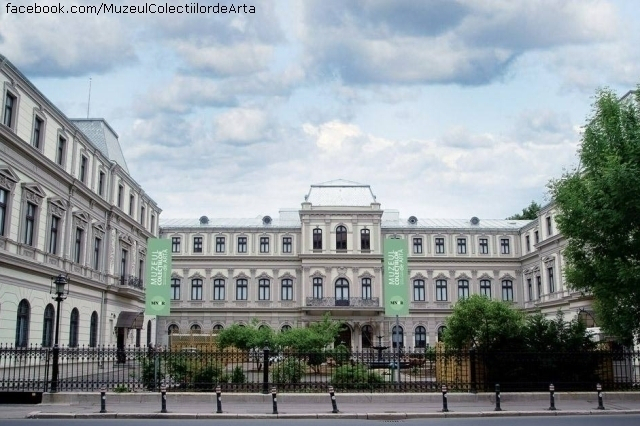The Art Collection Museum, 40 years of existence
The Art Collection Museum was set up 40 years ago, in 1978

Steliu Lambru, 17.11.2018, 14:00
The Art Collection Museum was set up 40 years ago, in 1978, and is a branch of the National Art Museum. “The Romanit Palace which is housing the Art Collection Museum is a lofty building, situated on Victory Road, along Bucharests central axis. The museum houses Romanian modern art, traditional art, paintings, graphic works, sculptures as well as Western and oriental decorative art. After extensive refurbishment works were completed, the museum was re-opened in June 2013.
Liliana Chiriac, the coordinator of the Art Collection Museum says the institution she runs has something truly special, unique about it, although it can also be included in the category of similar cultural institutions.
Liliana Chiriac: “I believe the museum layout, the way the works of art are exhibited are something unique. Of course all museums are set up based on donations, collections or purchases, it is true that less on purchases. As all museums have received donations, I believe that this formula of putting on show the donations as such, to show to the public the personality of each art collector, is something to be enjoyed only in our museum. I dont know how big other museums are, because I dont know how many objects they have, I only know that the number of works we have is on the rise. Since 1978, when the museum had 13 collections, 2 of which were only in custody, until now, when we have 47 collections, adding to which there will be two collections this year, the number of collections has grown considerably. And this is not because the museum dates back to the communist times, as many people say nowadays, imagining that many collections were confiscated back then. We are witnessing a real phenomenon. 16 collections have been donated since 1990 and we continue to receive donations. This year we will receive two very important and valuable donations. Of course the collections in the museum are not all monographic, as there are also heterogeneous collections. The heterogeneous collections are gathered based on the collectors taste and how much money they had when purchasing what they liked.
The number of donations has grown after 1989. We asked Liliana Chiriac how she explains this phenomenon:
Liliana Chiriac: “If we look at the figures, we see that most of these collectors did not have heirs. On the other hand, even those who did, as is the case with the Hurmuz Aznavorian collection, which was donated by his daughter about ten years ago, they knew that this had been their parents wish and did it in their memory. The collection was created in the inter-war period. He was a legal man but was deported to the Canal labour camp and his family lived on these works collected by the father. His daughter donated his collection in memory of her father and this was a very important thing for the history of Romanian culture. Ive seen how at museums in London and other cities, when you enter a room, you seen a little plaque with the name of the person who owns the collection. Thats what weve also been doing from the beginning, because thats what the donation contract entails, for the name of the collector to be mentioned.
We asked Liliana Chriac if she is pleased with the exposure the museum benefits from:
Liliana Chiriac: “From what I read in the visitors book and what I understand from my interactions with them, people are fascinated. Many dont know it, but being a state institution, there isnt a state budget to promote this museum. We promote ourselves as much as we can, using social media, which has limited impact. Older people dont use Facebook very much, they dont even access the museums website. We have no other means of advertising ourselves. Museums ran by the City Hall have more means at their disposals, such as banners around the city. This is not possible in our case because it is costly and the Ministry of Culture does not allocate a budget for promotion. Generally, visitors who arrive at the Museum of Art Collections are pleasantly surprised. Many tell us it is more beautiful than any other museum theyve seen. Im speaking about Romanian, but also foreign visitors. I think the building housing the museum, the Romanit Palace, also plays a role.
The Museum of Art Collections has turned 40 and it keeps growing, which, for an institution of its kind, is a very good thing.
(translated by: Diana Vijeu, Cristina Mateescu)






























